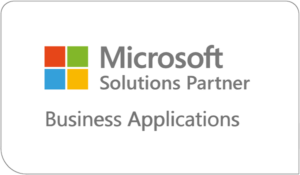Charles Rathmann, Senior Editor, Construction Technology, IRONPROS


THESIS flips the script this week and puts Charles Rathmann, Senior Editor at Construction Technology for IRONPROS, in the hot seat. If you are in the construction industry, you know Charles is an avid angler! You also know IRONPROS and IRONMARKETS offer construction information technology education and insights. Charles’ influence as an editor is always fair and balanced with his access to the entire technology industry which makes his insights invaluable. His podcasts include high profile construction industry influencers. In this THESIS, we talk about the strange bedfellows made possible by today’s low code and no code applications, AI separating hype from help, on-premise hold outs, and other insightful topics.
Q: Charles, who is IRONPROS and IRONMARKETS and what are their key objectives?
A: IRONPROS is a web presence started by a large business to business trade publisher. We rebranded it to IRONMARKETS in 2023. IRONPROS is designed to support buyers evaluating technology products and I am involved in the technology side. The overall company has several media titles in construction and equipment on the heavy and civil side of construction looking at interoperability and partnering.
Q: How did you become a media representative for construction solutions?
A: I began in traditional marketing and business strategy and met with many construction companies, debriefing their management teams and discovering underlying issues to define growth. It was early on the agency side when I moved into engineered products and construction equipment and sold civil engineering services for a while.
Once I was on the ERP side with project-based solutions, construction and field services became my main disciplines. From there, I started a catalog of what is happening in the solution industry to help people understand their real options as they move into a given sector and begin to evaluate solutions.
Q: With your bird’s eye view across the technology market for construction, what trends do you see beyond the “always there” topics like AI, safety, and labor. What else do you see?
A: What we saw as unique for 2023 and now 2024 is the industry moving towards more of a composable solution. In the past, ERP vendors wanted to sell you all their functionality and you would run everything on their solution. Now APIs, restful APIs, standard integrations, low code, and no code integration platforms, are becoming much more attractive. Entrepreneurial product niches have more leverage than they ever did.
CFOs are admitting that one financial application is not going to have the ideal solution for every part of their business. That is a departure from the past.
We see this happening at a more rapid pace among companies performing projects of any significance with the demands for accountability and measurement, visibility and interoperability. The solutions being used by project partners is really pushing that.
Q: You said people are looking at apps, integrations, and APIs more than ever. Do you feel that makes interoperability decisions easier?
A: Companies used to feel pressured to standardize across their business on one vendor’s functionality. Someone would implement the finance package and add on supply chain management and maybe a CRM module. And they would build out more predictably within that same vendor family. Now you see more people who will have that ERP but will have other integrated solutions running in the field or different parts of the business that are not ideally supported by that ERP. We are seeing a lot more availability of application programming interfaces.
Now we have entrepreneurial activity that can stand up very advanced functionality and make it available. Microsoft has always been an example of that strategy even before it was cool due to the use of various independent software vendors who could take a broad solution and drive it deeper into a vertical. That is the ability to meet vertical or micro vertical needs.
Q: There is a ‘strange bedfellows’ concept here. Products that were previously competitors are integrating, like here at SIS LLC with Procore through our SIS Construct 365 Connector for Procore releasing at the end of February.
A: Yes, Procore became successful as the first multi-tenant software as a service construction program and project management application because of cloud computing and mobile devices. Maybe your ERP vendor does not have everything you need, and you want to extend deeper into business practices.
A specific ERP and Procore may have a little overlap in a Venn diagram, but Procore does not have a general ledger. And you may have a more robust financial team using it who are going to need the right ERP.
Q: AI is all the buzz. How do you see that changing ERP? Are buyers making decisions based on AI potential?
A: For ERP itself, there have been elements making some use of AI for a long time. Matching invoices to purchase orders for example. I think coming into the project management side, from a predictive analytics side, to identify risk, we are seeing AI come into preconstruction for planning and scheduling to create optimized plans and identify risks in plans.
We are also seeing AI on the on the field technology side as we have more autonomous equipment and a machine vision that can scan a site, or a facility using LIDAR and begin to match that against the plan to see where you have deviations. That is called machine vision.
I do not think AI is something that is going to come into the traditional ERP because it is more about the analytic tools around the ERP. There might be analytics and alerts and guides on the side functionality in some narrow parts of the business, but I think we are going to see a lot more application of AI to lower skilled areas where you can enable a less skilled person as more of an expert in areas where you can run a piece of equipment without an operator. Or you need one person to supervise several and instruct them in a more granular way with ERP. It is something we are hearing about from an enterprise search interface standpoint primarily to help find documents. Like Microsoft Copilot.
Q: From your point of view, what percentage of enterprise construction companies are in the Cloud at this point. And for those who are not, what barriers are keeping them from moving forward?
A: I would have a hard time putting a percentage on it because we still have a lot of legacy applications out there that are on-premise. Right now, in terms of products that are coming to market, most of them are at least selling on subscription. Even if it is an old legacy version of code running in essentially a hosted environment and then they are charging by subscription for that.
We have companies who are on single tenants. And we have multi-tenant software as a service. There are still software companies selling on-premise. I think most deals on-premise are on a perpetual license. There are still some holdouts to people who will want to do things on-premise. Some of those companies have the physical plant and do not want to walk away from that investment. They are operating in areas plagued with very poor connectivity. Today there are companies who will come in and build your connectivity for that project or for your headquarters.
The technology that is going to get the most research and development attention and resources, the one they will make more money with, and then the idea of being responsible for updating themselves, is what makes the impact. Knowing every time there is new functionality they must go through a mini reimplementation and regression test. They must decide if they want to keep reimplementing.
It comes down to a cost benefit analysis. There are costs having software on-premise that you might not be thinking about. Once you catalog those and see this recurring charge every month as a step ahead or a step back you know those results are going to drive your decision.
I also think we are past the era where people are afraid of the cloud or think that it is less secure. It is time to move past that reasoning because there are companies who still feel safter on-premise. But I am seeing that thinking going by the wayside.
On-premise users must think from an accounting standpoint, how do you value having a solution that eliminates nonvalue added work, eliminates administrative processes involved in database administration, or managing the computer resource. All of these might save you a good deal of resources.
The bottom line is everything is going to get old. But there are companies who are still selling that on-premise solution of the cloud option for the folks who want it.
Q: How do you see enterprises making their ERP digital transformation decisions these days? Tactical? Strategic? Budget? ROI? Or true functionality?
A: The decision to move in this direction seems to come from pressure from trading partners, from owners, and from general contractors. According to research, general contractors were pushing the envelope on technology. But now the owners are beginning to specify the capability they want their contractors to have.
Knowing the stakes and having an ERP solution do what you need for your company, including interoperating with your trading partners, is a move you need to make in today’s modern world.
I know companies like SIS LLC match client functional needs to the way the product enables users. What we are seeing in the industry are contractors who have not really evaluated digital modern day ERP solutions. They must first understand their own needs and decide which products are going to help them on their journey with the least degree of risk and cost.
Q: What impact can the right ERP make on a project’s success?
A: Right away with the go no go decision. If you have the data to help you understand if this is going to be a good deal for us or not? The ability to plan the project based on actuals or past projects. The ability to schedule based on what you are looking to accomplish, and schedule collaboratively with other people, vendors, and partners in preconstruction.
To investigate the work in progress phase and be able to capture progress and make that available to owners, general contractors, and trading partners immediately. With all of this, you know everything that is going to help you use fewer resources and undertaking the project is going to eliminate misunderstandings and miscommunications.
Q: You mentioned interoperability. What is ERP construction technology doing in this area?
A: Construction has been very resistant to this. There are multiple bodies and committees looking at construction interoperability, but what they are really doing is enabling different vendors to understand what each other are doing to facilitate interoperability. We have the EMP standard for equipment data which is like telematics data coming off equipment. We see some standards coming out for exchanging topographic data with great control.
But as far as data transactions between companies, that is not somewhere we are seeing much traction. What we are seeing that will help with interoperability is software that can clean, scrub and harmonize data from various nonrelated sources to populate either analytics or transactional system. We also see a lot of low code, no code integration platforms where you can, as a citizen developer, stand up integrations.
To joke, I could take a shoe off and pound it on the table saying, “There is a simple solution to things like a change order for an RFI for a nonconformance for any of these different events.” And demand standards to move across these different products, but I do not think the construction technology industry is quite there yet!
Q: I am really surprised to see that construction companies do not automatically know Microsoft has a construction solution. How do you see Microsoft doing in the construction market?
A: This lack of visibility is a victim of Microsoft’s other successes because people think Microsoft and then think Outlook, Word, etc. But Microsoft Dynamics 365 for Finance & Supply Chain should be considered by contractors, particularly once they get up to that enterprise size to benefit from a very large software vendor providing your enterprise backbone of you know might set you up for the next decades because you know it will stay current.
A smaller company may not be able to keep up with the pace of advancing technology. You know who Microsoft is. One reason I have enjoyed paying a lot of attention to SIS LLC is because Microsoft needs to be in here – in the construction. Let us see if we can help folks understand that!




Wow, what a excellent article! The way you’ve broken down the complexities of construction work is both clear and useful.
It’s refreshing to see such helpful content that truly helps professionals in the field.
I’ll be linking to this on my house construction blog because
I know my audience will find your insights extremely useful.
Appreciate the great work!